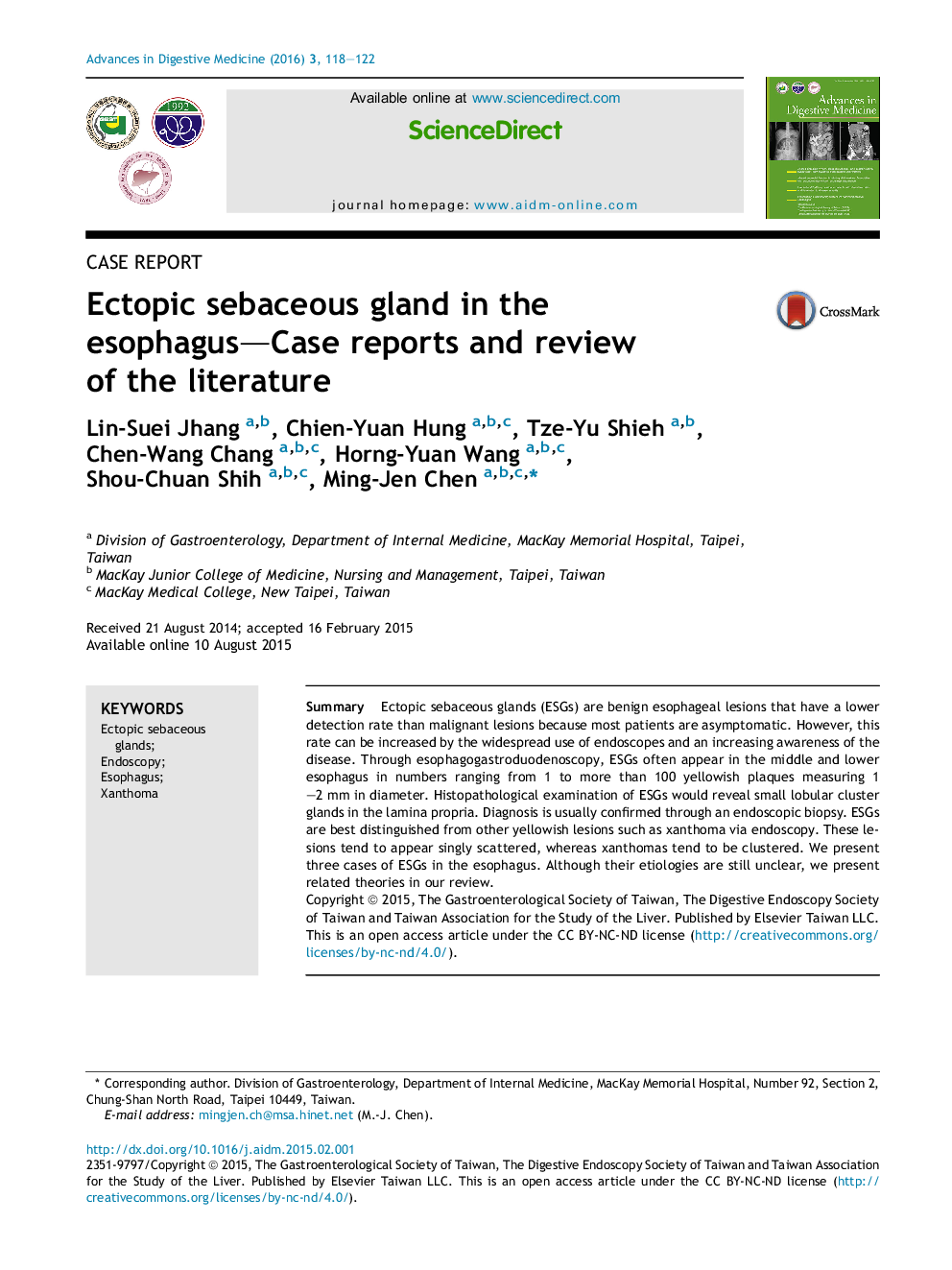| Article ID | Journal | Published Year | Pages | File Type |
|---|---|---|---|---|
| 3278503 | Advances in Digestive Medicine | 2016 | 5 Pages |
SummaryEctopic sebaceous glands (ESGs) are benign esophageal lesions that have a lower detection rate than malignant lesions because most patients are asymptomatic. However, this rate can be increased by the widespread use of endoscopes and an increasing awareness of the disease. Through esophagogastroduodenoscopy, ESGs often appear in the middle and lower esophagus in numbers ranging from 1 to more than 100 yellowish plaques measuring 1–2 mm in diameter. Histopathological examination of ESGs would reveal small lobular cluster glands in the lamina propria. Diagnosis is usually confirmed through an endoscopic biopsy. ESGs are best distinguished from other yellowish lesions such as xanthoma via endoscopy. These lesions tend to appear singly scattered, whereas xanthomas tend to be clustered. We present three cases of ESGs in the esophagus. Although their etiologies are still unclear, we present related theories in our review.
